
Early spring Iris, Iris reticulata, blooms in mid-February in Seattle, in early April in Finland, often when the soil is still frozen. It is one of the very first spring flowers.
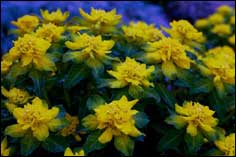
Euphorbia polychroma is very drought-tolerant and cold-hardy. It blooms for several weeks in April-May, with a fabulous sulphur-yellow color.
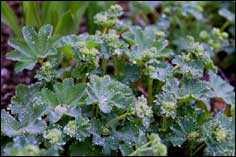
Lady's mantle, Alchemilla mollis, looks really cool after a drizzle. There are several cultivars of the wild-growing plant, with various leaf shapes and sizes. It likes partial shade.
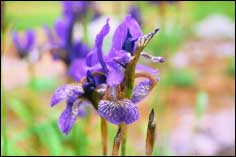
Siberian Iris, Iris sibirica, blooms for up to a month in May-June. It prefers semi-shade and moist soil, but will perform quite well even in sun and dry soil.

Fritillaria meleagris blooms in late spring. This bulbed perennial likes moist conditions.

Cerastium tomentosum, which I call Silver Grass, needs excellent drainage. It blooms late spring/early summer; the leaves are ornamental all season.
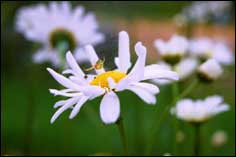
Daisies are beautiful, but some varieties self-seed profusely and can become a pest.

The Regal lily, Lilium regale, is the true king (or queen) of lilies. One small patch with regal lilies will spread their fragrance over an acre on a still summer evening. They are native to one valley in China, where they were discovered by a British explorer about a century ago.

Asiatic lily hybrid Grand Crue is one of the easiest lilies to grow. It blooms early summer.
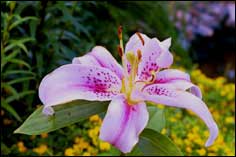
Oriental lily Mona Lisa can be tricky to grow, but it's wonderfully fragrant and worth a try.

Columbines, Aquilegia, are among my very favourite summer perennials. They like partial shade.
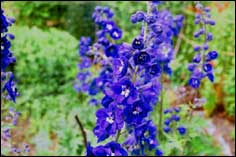
Delphiniums bloom in early summer and again in early fall. They perform best in cold-winter climates, where slug populations are minimal. In Finland they are trouble-free, in Seattle the slugs love them (even before they get a chance to bloom).
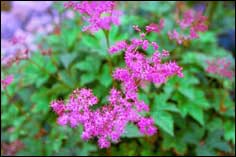
Queen of the Prairie, Filipendula rubra, has very fragrant and delicate flowers.
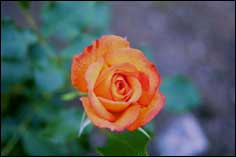
Roses belong in every garden. This is Linnea's and my favourite, called Sahara.
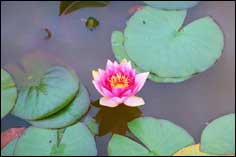
No garden is complete without a pond with water lilies. This is a hardy type for northern climates.
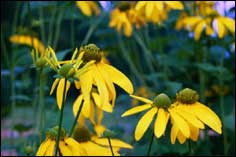
Rudbeckia laciniata becomes up to 2 m (7') tall. It is quite drought-tolerant. Honeybees love it. It needs staking in windy climates.
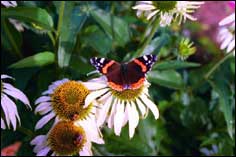
Echinacea purpurea, var. Alba is a great butterfly-attracting plant. I've counted up to 12 butterflies at a time on one plant.

Asters come in many colors and sizes. I prefer the ones that don't need staking, and whose blossoms remain good-looking through autumn storms.
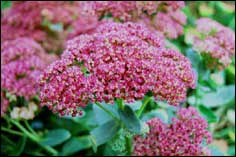
Autumn Sedum, Sedum spectabile, is the last perennial to bloom in my gardens in fall, from late September into November. Contrary to other Sedums, it likes moist, rich soil.
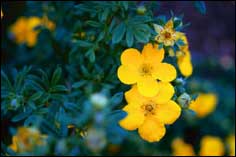
Potentilla fruticosa is actually a deciduos shrub. It is full of flowers from mid-summer well into fall. It needs good drainage and little water.
 Early spring Iris, Iris reticulata, blooms in mid-February in Seattle, in early April in Finland, often when the soil is still frozen. It is one of the very first spring flowers.
Early spring Iris, Iris reticulata, blooms in mid-February in Seattle, in early April in Finland, often when the soil is still frozen. It is one of the very first spring flowers.  Euphorbia polychroma is very drought-tolerant and cold-hardy. It blooms for several weeks in April-May, with a fabulous sulphur-yellow color.
Euphorbia polychroma is very drought-tolerant and cold-hardy. It blooms for several weeks in April-May, with a fabulous sulphur-yellow color. Lady's mantle, Alchemilla mollis, looks really cool after a drizzle. There are several cultivars of the wild-growing plant, with various leaf shapes and sizes. It likes partial shade.
Lady's mantle, Alchemilla mollis, looks really cool after a drizzle. There are several cultivars of the wild-growing plant, with various leaf shapes and sizes. It likes partial shade.  Siberian Iris, Iris sibirica, blooms for up to a month in May-June. It prefers semi-shade and moist soil, but will perform quite well even in sun and dry soil.
Siberian Iris, Iris sibirica, blooms for up to a month in May-June. It prefers semi-shade and moist soil, but will perform quite well even in sun and dry soil.  Cerastium tomentosum, which I call Silver Grass, needs excellent drainage. It blooms late spring/early summer; the leaves are ornamental all season.
Cerastium tomentosum, which I call Silver Grass, needs excellent drainage. It blooms late spring/early summer; the leaves are ornamental all season.  The Regal lily, Lilium regale, is the true king (or queen) of lilies. One small patch with regal lilies will spread their fragrance over an acre on a still summer evening. They are native to one valley in China, where they were discovered by a British explorer about a century ago.
The Regal lily, Lilium regale, is the true king (or queen) of lilies. One small patch with regal lilies will spread their fragrance over an acre on a still summer evening. They are native to one valley in China, where they were discovered by a British explorer about a century ago.  Delphiniums bloom in early summer and again in early fall. They perform best in cold-winter climates, where slug populations are minimal. In Finland they are trouble-free, in Seattle the slugs love them (even before they get a chance to bloom).
Delphiniums bloom in early summer and again in early fall. They perform best in cold-winter climates, where slug populations are minimal. In Finland they are trouble-free, in Seattle the slugs love them (even before they get a chance to bloom).  Rudbeckia laciniata becomes up to 2 m (7') tall. It is quite drought-tolerant. Honeybees love it. It needs staking in windy climates.
Rudbeckia laciniata becomes up to 2 m (7') tall. It is quite drought-tolerant. Honeybees love it. It needs staking in windy climates.  Echinacea purpurea, var. Alba is a great butterfly-attracting plant. I've counted up to 12 butterflies at a time on one plant.
Echinacea purpurea, var. Alba is a great butterfly-attracting plant. I've counted up to 12 butterflies at a time on one plant.  Asters come in many colors and sizes. I prefer the ones that don't need staking, and whose blossoms remain good-looking through autumn storms.
Asters come in many colors and sizes. I prefer the ones that don't need staking, and whose blossoms remain good-looking through autumn storms. 























